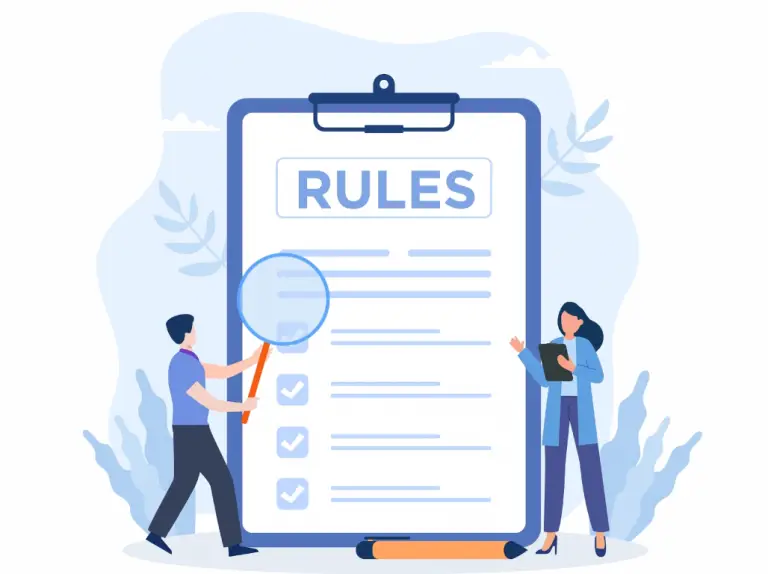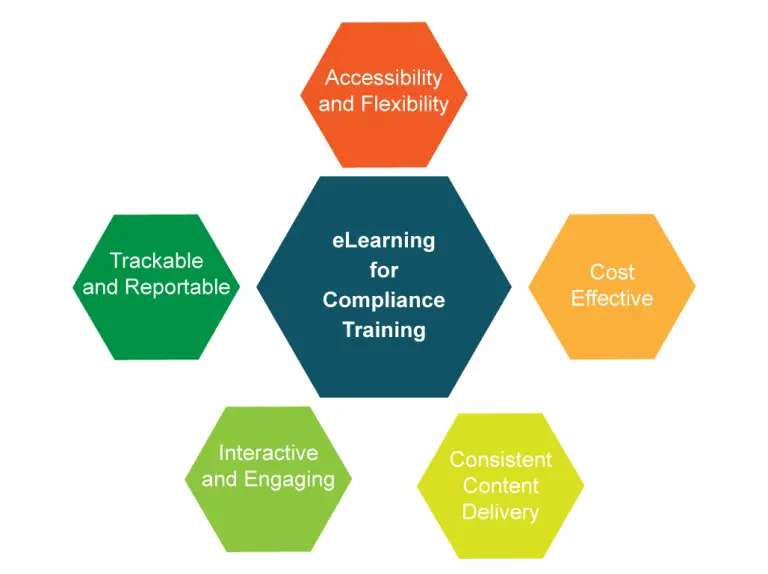In today’s fast-changing business environment, effective compliance training is more crucial than ever. eLearning in compliance training has emerged as a powerful tool for ensuring that employees are thoroughly knowledgeable about regulations, standards, and company policies. This blog undertakes a comprehensive exploration of the role of eLearning in compliance training, supported by practical examples to underscore its significance.
What is Compliance Training?
Compliance training is an educational program designed to inform employees about the laws, regulations, and company policies that apply to their daily job responsibilities. This type of training aims to prevent and detect violations, ensuring that employees conduct business ethically and legally. Topics often covered in compliance training include data protection, anti-harassment, workplace safety, anti-bribery, and environmental regulations.

Why eLearning for Compliance Training?
eLearning for compliance training provides significant advantages, which are essential for effective and efficient regulatory adherence. By using eLearning, organizations can ensure that employees are consistently and thoroughly trained on compliance matters, adapting to diverse needs and schedules.

Accessibility and Flexibility
eLearning platforms are accessible anytime and anywhere, providing flexibility for employees to complete training at their convenience. This is particularly beneficial for global organizations with employees across different time zones.
Example: A multinational corporation uses an eLearning platform to deliver anti-bribery training. Employees from different countries can access the training materials at their convenience, ensuring that all staff members receive consistent and timely training.
Cost-Effective
Traditional classroom-based training can be expensive, considering the costs of travel, accommodation, and materials. eLearning significantly reduces these costs by delivering training digitally.
Example: A financial institution implements eLearning modules for its annual compliance training. By doing so, it saves on the expenses associated with hosting in-person sessions, such as venue hire and printed materials.
Consistent Content Delivery
eLearning ensures that all employees receive the same training content, which is crucial for maintaining compliance standards across the organization.
Example: A healthcare provider uses an eLearning platform to deliver mandatory training on patient privacy regulations. The consistent delivery of content helps ensure that all staff members understand and adhere to the same standards.
Interactive and Engaging
Modern eLearning platforms often include interactive elements such as quizzes, simulations, and gamification to enhance engagement and retention.
Example: An energy company incorporates interactive scenarios and quizzes into its safety compliance training. Employees engage with the material more actively, leading to better retention and application of safety protocols.
Trackable and Reportable
eLearning systems can track progress and generate reports on completion rates, helping organizations monitor compliance and identify areas for improvement.
Example: A retail chain uses an eLearning management system to track the completion of its code of conduct training. Managers can access reports to ensure that all employees have completed the training and identify any who need follow-up.
Implementing eLearning in Compliance Training
Implementing an effective eLearning program for compliance training involves several key steps to ensure employees understand and adhere to specific regulations and standards.
1. Define Clear Learning Objectives
- Identify specific regulations and standards that employees need to understand and follow.
- Set measurable goals for what employees should achieve by the end of the training.
- Align learning objectives with organizational compliance requirements.
2. Create Engaging and Interactive Content
- Develop visually appealing modules that use multimedia elements like videos, infographics, and animations.
- Include interactive elements such as simulations, scenarios, and drag-and-drop activities to enhance engagement.
- Ensure content is structured to make complex information easily digestible.
3. Assess Learning and Monitor Progress
- Incorporate quizzes, tests, and practical exercises to evaluate employees’ understanding of the material.
- Utilize the eLearning platform’s tracking features to monitor progress and identify areas needing improvement.
- Provide feedback and additional resources based on assessment results.
4. Update Content Regularly
- Review and revise eLearning materials to reflect the latest regulatory changes and compliance requirements.
- Communicate updates and new content to employees to keep them informed and compliant.
- Schedule regular content reviews and updates to maintain the relevance and accuracy of training materials.
By embracing eLearning for compliance training, organizations can not only meet regulatory requirements but also empower their employees with the knowledge and skills needed to succeed in a compliant and ethical work environment.



